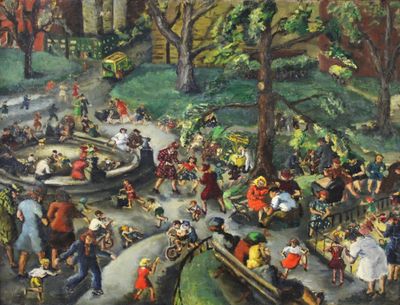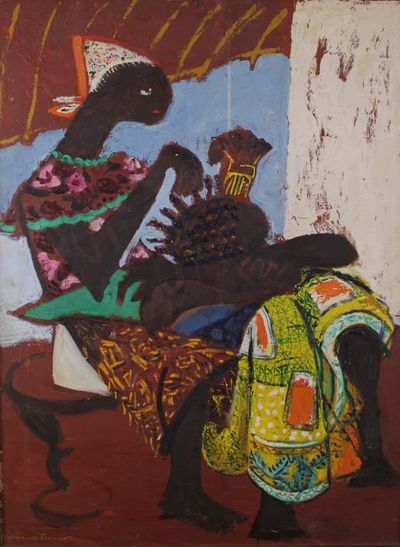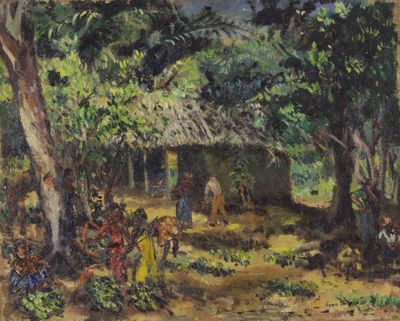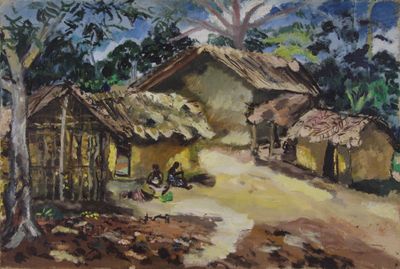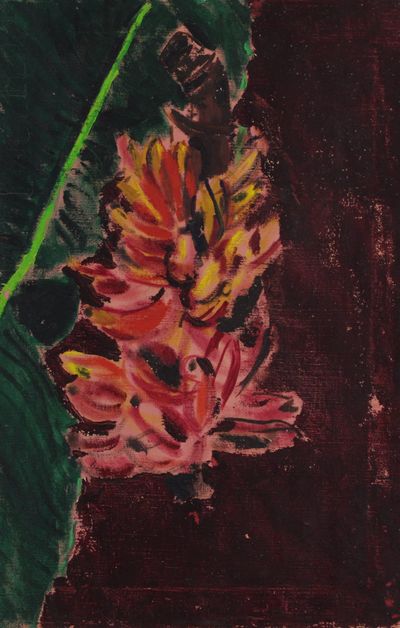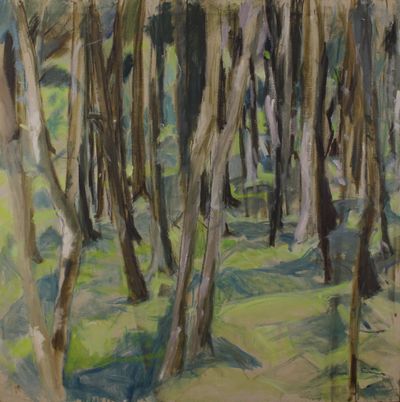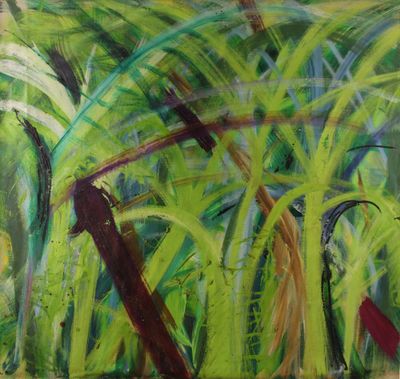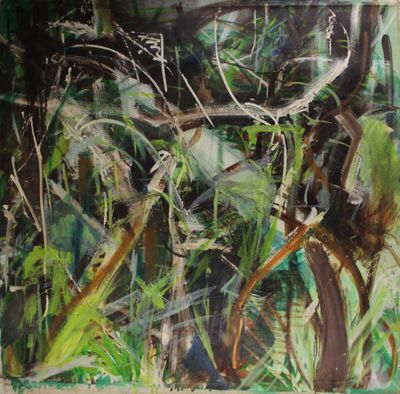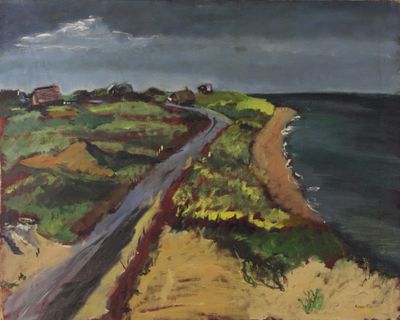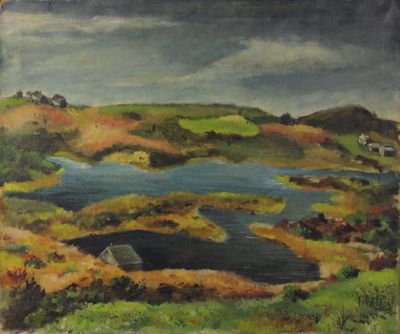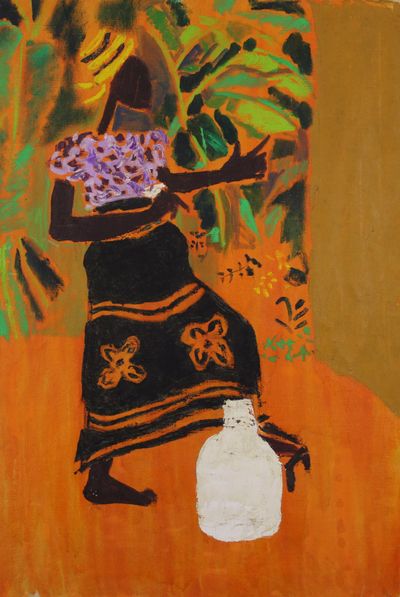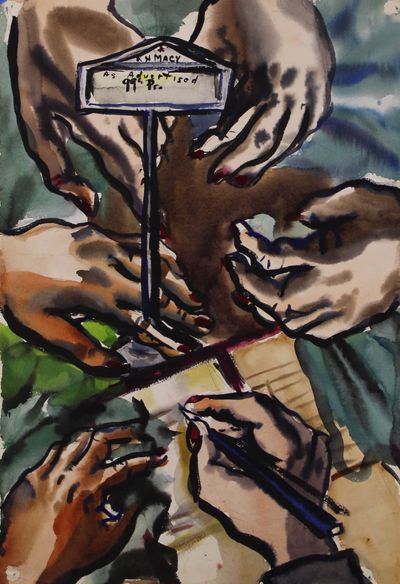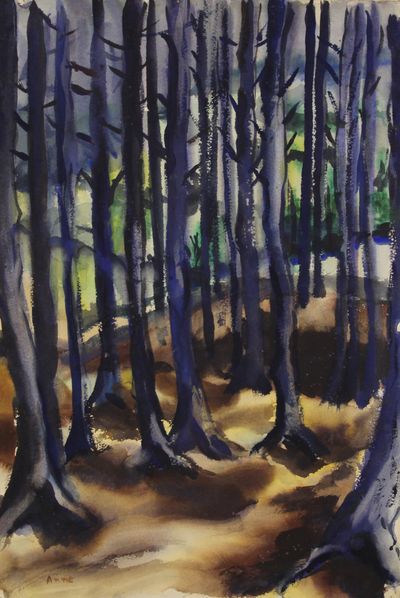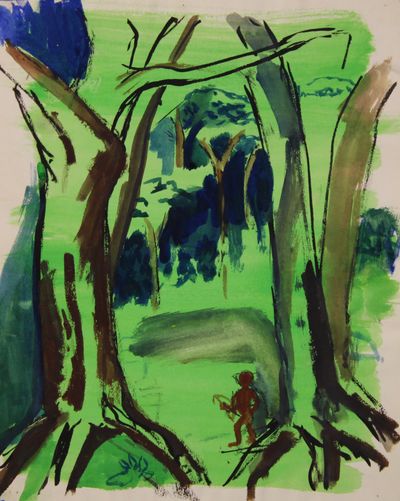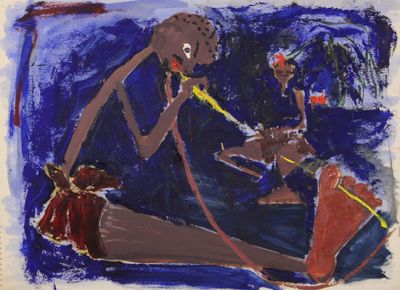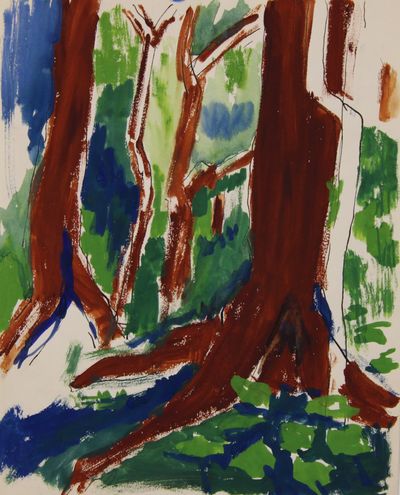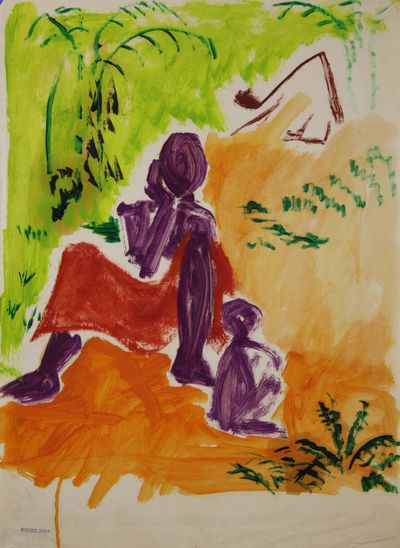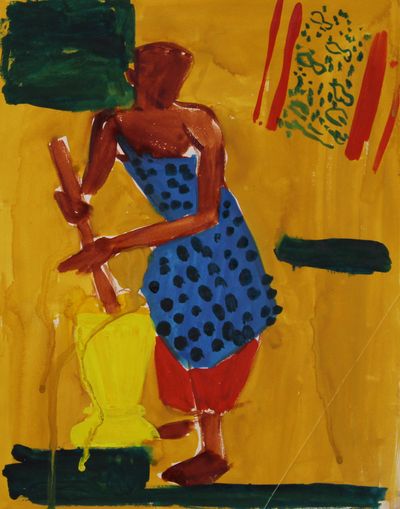Anne Eisner
Anne Eisner (1911-1967) and Dorothy Eisner (1906-1984) represent an extraordinary example of sibling creativity. Each of them pursued a life in art from an early age through trying times that included the Great Depression and World War II. They had adventures along the way: Anne spent nine years in the ex-Belgian Congo (now the Democratic Republic of Congo). Dorothy attended the Leon Trotsky trial in Mexico City. They responded to what they witnessed wherever they found themselves.
The Eisner sisters remained unconventional all their lives. This exhibition offers a sampling of their work and a splendid opportunity to appraise—and admire—their individual visions.
Anne Eisner (1911-1967) and Dorothy Eisner (1906-1984) represent an extraordinary example of sibling creativity. Each of them pursued a life in art from an early age through trying times that included the Great Depression and World War II. They had adventures along the way: Anne spent nine years in the ex-Belgian Congo (now the Democratic Republic of Congo). Dorothy attended the Leon Trotsky trial in Mexico City. They responded to what they witnessed wherever they found themselves.
The Eisner sisters remained unconventional all their lives. This exhibition offers a sampling of their work and a splendid opportunity to appraise—and admire—their individual visions.
Among the earliest work in the show is Anne Eisner’s Washington Square NYC, ca. 1935, a wonderfully engaging bird’s-eye view of an iconic city park featuring “a Brueghel swarm of adults and children” as poet Rosanna Warren describes it. Equally of the time is a lively image of hands encircling the 99 cents bin at Macy’s department store.
Dorothy Eisner’s early paintings have a more pronounced social realist feel to them, be it Zora’s Café (1936) with its bar and pool table or her portrait of sister Anne seated in a humble room peeling an apple. The latter painting brings to mind Dorothy’s images of the denizens of Appalachia in the Carolinas painted around the same time. Her portrait of fellow painter Sarah McPherson (1894-1978) seated in her Monhegan Island room conveys a similar humanity.
Both artists found an early muse on Monhegan, that remote outpost that has drawn artists from around the world. In Anne Eisner’s view of the Island Inn, painted in 1944, the iconic building that overlooks the harbor can be seen in the distance beyond the lush summer landscape. In watercolor she pays homage to the woodstove, a mainstay of island homes, and captures the cool light of Monhegan’s famous Cathedral Woods.
While living in the Congo with her anthropologist husband Patrick Putnam (1904-1953), Anne kept paints close at hand for recording scenes of life in the Ituri forest. Some of these paintings have a documentary feeling—views of huts, villagers gathered in a clearing or picking palm nuts—but more often she treats her subjects with a modernist-abstract dynamism. Standouts include African Hair Salon; a colorful bunch of bananas; a series of expressionist renderings of the forest; and a captivating portrait of a Mbuti (Pygmy) man playing a bow instrument. At times the palette has a Fauvist feel.
I knew Dorothy Eisner as a next door neighbor and friend in the few years between inheriting my uncle William Kienbusch’s Great Cranberry Island house in 1980 and her death in 1984. She and her husband, editor, author, game theorist and fly fisherman John McDonald, hosted croquet matches and were a part of a lively island artist cohort that included Kienbusch, John Heliker, Robert LaHotan, and Gretna Campbell.
Some of Eisner’s subjects related to her husband’s passions, most notably, fly fishing and horse racing. In Yellow-Tail Trout and Salmon Fly she honors the art of angling—the reward and the means to that prize. Her painting of Hall of Fame jockey Eddie Arcaro (1916-1997) weighing in is a lively rendering of a pre-race ritual. In 1948, the year Eisner painted him, Arcaro won the Triple Crown riding Citation, one of the winningest racehorses of the time.
Rosanna Warren has called Dorothy Eisner “fearless” and noted how her paintings “give a feel for the wholeness of life.” A painting of bathers at Preble Cove—a favorite spot on Great Cranberry—is a wonderful evocation of an island outing—and recalls some of Marsden Hartley’s paintings of Old Orchard Beach. Equally “whole” in its feeling is a colorful study of three figures in a rowboat.
Anne Eisner also painted on Great Cranberry. Hartley Woods, Cranberry Island (Maine), 1964, offers a view of a stand of trees near Betty Hartley’s home. She captures the dappled aspect of the scene with energized brushwork. The exhibition also features two of her landscapes of Martha’s Vineyard.
While Dorothy Eisner is well known in Maine—shows of her work have been held at the Farnsworth Art Museum and Ogunquit Museum of American Art—Anne Eisner makes her debut here. This exhibition is more than a felicitous sisterly pairing: it is a tribute to two artists whose paintings continue to make an indelible mark on the rich canvas of 20th-century art.
--Carl Little
Further reading:
Anne Eisner, Madami: My Eight Years of Adventure with the Congo Pygmies, 1954
Christie McDonald, editor, Images of Congo: Anne Eisner’s Art and Ethnography, 1946-1958, 2005. With essays by Suzanne Preston Blier, Christraud M. Geary, Kay Kaufman Shelemay, Christie McDonald, Enid Schildkrout and Rosanna Warren, and comments by Louis Finkelstein and Joan McD. Miller
Christie McDonald, The Life and Art of Anne Eisner, An American Artist between Cultures, 2020
Christie McDonald, editor, Painting My World: The Art of Dorothy Eisner, 2009. With essays by Mary Ann Caws, Carl Little, Christie McDonald, and Rosanna Warren.

